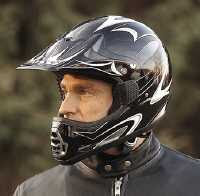How many times have you pulled up to the pumps lately only to be shocked at the price of gasoline? Suddenly your $25 tank of gas is costing $40. Have you considered trading your vehicle in for something that gets better fuel economy? How about a Hybrid vehicle? If you’ve ever wondered “how do hybrid vehicles work?” read on.
Hybrid vehicles address two issues – global warming by reducing emissions and reduced fuel costs. There are lots of different hybrid designs showing up on the market, so understanding how they work is very important to getting the best value for your money.
If you have ever owned a moped, you can proudly consider yourself a first generation hybrid owner because they combine pedal power and gasoline. Hybrid vehicles really aren’t that new a concept. You’ll find them all around you in commercial use. Giant mining trucks, submarines, buses, and even train engines all have a fuel source and an electrical source of power.
Most of the hybrid vehicles we are seeing on the market are gasoline and electric hybrids. This means they use both gas and electricity to power them.
The two power sources can be combined in different ways. The parallel hybrid has a fuel tank which supplies fuel to the engine and a set of batteries which supplies power to the electric motor. Both sources are able to turn the transmission.
The series hybrid is a little different. The gasoline engine turns a generator which can either power the electric motor that drives the transmission or charge the batteries. In this type of hybrid the gas engine never directly powers the vehicle.
With a hybrid car the gas engine can be a lot smaller than in a conventional car so it can be a lot more efficient. Acceleration requires a larger engine to produce the power needed, but by using a smaller engine and combining it with the assistance of an electrical motor that is operating at peak load the acceleration needs of a vehicle can be met.
Hybrid vehicles also capture the energy from the braking system. When the brake is applied, energy is removed from the car and dissipated as heat which is then captured and stored in the batteries for later use.
Hybrid cars also have an automatic shutoff, so when the vehicle comes to a stop the engine is shut off and then restarts automatically when the accelerator is touched. This conserves energy that would be wasted when idling.
Depending on the manufacture, the technology is used in various forms but the basics remain simple. Hybrid technology in the consumer auto market is still relatively new but will continue to develop and improve.
Hybrid vehicles work efficiently to reduce tailpipe emissions and improve mileage. So if you are in the market for a new vehicle you might want to have a look at the hybrids.
naturallycurly.com
Subscribe to:
Post Comments (Atom)

No comments:
Post a Comment